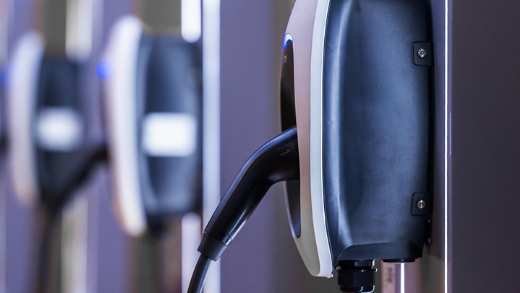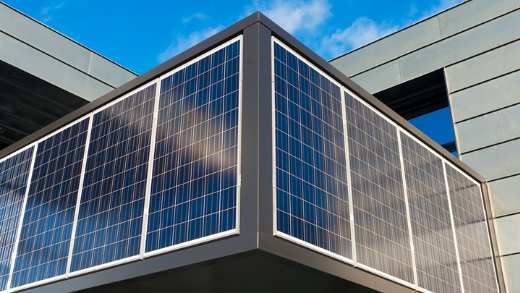Better market mechanisms and grid connection arrangements are essential to restore a stable investment environment in the offshore wind sector, as Nick Molho explains.
Read this article to understand:
- Why accelerating investment in offshore wind power is vital to achieving net-zero ambitions
- The factors inhibiting investment in offshore wind
- Key policy changes needed to speed the transition
On November 16, the UK government stepped in to reinvigorate investment interest in offshore wind by increasing the maximum prices available for Contracts for Difference (CfDs) in its next auction in 2024.
The maximum strike price for offshore wind projects has been increased by 66 per cent, and 52 per cent for innovative floating wind platforms secured by mooring lines.1
This follows a period when momentum behind the offshore wind industry had appeared to stall, not just in the UK. A range of factors has affected the deployment of new projects and supply chain growth in several European countries and, most recently, the US as well.
In July, Swedish energy company Vattenfall halted the development of the Norfolk Boreas project, which would have been the biggest offshore wind project in the UK.2 Then, in September, the UK’s fifth auction round (AR5) to award CfDs for new renewable energy projects resulted, for the first time, in not a single offshore wind project coming through as the ceiling price for the auction was too low.3
Elsewhere, countries such as Germany are facing their own difficulties with their auctions, while in the US, Danish energy company Ørsted recently pulled out of two major projects.4,5
Confronting challenges
Once seen as an emerging, expensive and risky technology, offshore wind is now a mainstream and relatively affordable solution that should play an important role in the power mix of many countries. In the UK, offshore wind could act as the potential backbone of what the government aims to be a zero-emissions power system by 2035.
At times, wind is already the dominant source in the UK energy mix
For reasons of geography, the UK has the greatest wind energy capacity in Europe; at times, wind is already the dominant source in the energy mix.6 The UK has 14GW of installed offshore capacity (including the world’s four largest offshore wind farms) and a government target of 50GW by 2030.
Several other Northern European countries also have big ambitions. France is targeting 40GW of installed capacity by 2030, while Germany and Norway are both aiming for 30GW. Offshore wind has seen significant investments in Asia, including in the nascent Taiwanese market. The sector has also enjoyed growing support in recent years in the US through the Inflation Reduction Act and Biden administration’s target of 30GW of offshore capacity to be deployed by 2030.7
This begs the question: what is impeding development and investment prospects in a sector that has so much going for it? Project cost increases, grid construction and connection delays, supply chain constraints, policy support mechanisms and skills gaps have all played a part, as set out below.
Cost increases
Over the last 18 months, the cost of delivering UK offshore wind projects has risen by around 40 per cent, with increases also seen in the European and US markets.8
The high cost of key commodities such as steel, supply chain constraints, systemic problems with grid connections and higher interest rates have all contributed.
Systemic delays to grid construction and connections
This is affecting a wide range of power projects and is an acute problem for offshore wind in countries with ambitious deployment targets. Two trends are driving delays. First, planning and regulatory constraints have slowed the speed at which transmission infrastructure can be built in many developed economies.9 In the UK, it can take up to 14 years to build a new transmission line.10 Second, offshore wind developers have increasingly long waiting periods to be awarded a connection date due to connection queue management rules. Some UK developers are being awarded connection dates ten years out in the future.
Supply chain constraints
The offshore wind and power grid sectors in many European economies are witnessing significant delays as suppliers have not yet caught up with ambitious targets.
There has been a sharp increase in global demand for HVDC cables, converter stations and critical materials
With many economies seeking to decarbonise their power grids, there has been a sharp increase in global demand for high voltage (HVDC) cables and converter stations, and critical materials such as copper and aluminium, which suppliers are struggling to meet.11 Lead times for HVDC converter stations are said to have stretched to seven years in the UK.
Skills gap
A shortage of engineers and other skilled energy sector workers is affecting the renewables and grid sectors.
A recent report by the UK’s Electricity Network Commissioner, Nick Winser, highlighted that tackling skill gaps in areas such as science, technology, engineering and maths (STEM) is essential to deliver the huge volume of new transmission lines in the UK in the next 15 years.12 Back in 2021, National Grid estimated decarbonising the UK energy sector would require the recruitment of 400,000 skilled workers out to 2050.13
Policy
The public policy environment in the UK, US and many European countries has not yet caught up with the challenges faced by the offshore wind sector. Market mechanisms designed to support offshore wind projects are putting downward price pressure on developers and supply chains, while some are not yet reflecting recent cost increases and planning delays.
Public policy in the UK, US and many European countries is not ready for the offshore wind sector challenges
However, the policy environment may be about to change with some governments – including the UK - explicitly recognising the challenges faced (see below).
Putting investment in offshore wind on a stable footing
Addressing these challenges is essential to improve the commercial viability and investment appeal of new offshore wind projects, as well as the underpinning supply chains for blades, towers, nacelles (housing for key parts) and more. It is also necessary if governments are to achieve their offshore wind targets, which in turn is critical for timely decarbonisation of power grids.
This is particularly important given the transition to net zero will require a growing number of sectors to run on affordable and clean electricity. This is the case for heating (to power electric heat pumps), surface transport (electric vehicles) and heavy industries like steel (with growing use of electric arc furnaces).
In the UK, electricity system operator National Grid ESO recently estimated that, regardless of market developments for other power sector technologies, a minimum of 73GW of installed capacity is required by 2035 (up from 14GW today) to meet the government’s ambition of having a zero-emissions power grid and growing electricity demand from other sectors.14
Governments around the world need to provide a comprehensive policy response to the challenges faced by the offshore wind sector, including:
Reviewing market mechanisms for offshore wind projects
This requires governments to review market mechanisms such as CfDs to reflect the changing supply chain, commodity, grid and financing costs faced by project developers.
In the UK, the government announced on November 16 it will increase the auction ceiling price for new offshore wind projects from £44/MWh to £73/MWh and from £116/MWh to £176/MWh for floating offshore wind projects ahead of renewables Allocation Round 6 (AR6) in September 2024.
This is an important move that will help reflect the real-life evolution of supply chain, commodity and costs faced by developers and supply chain manufacturers. Other governments are likely to consider similar moves. In the UK, the overall budget for the next auction round has not yet been determined; the size of that budget, together with the updated auction ceiling prices will, together, determine the volume of new projects that will get through.
Tackling grid construction and connection delays
A range of regulatory and administrative reforms are needed to speed up planning approvals for major transmission infrastructure projects and accelerate the allocation of grid slots for new offshore wind projects. Alongside the Autumn Statement on November 22, the UK government published its Transmission Acceleration Action Plan. In it, the government accepted most of the recommendations put forward in August by the UK’s Electricity Network Commissioner, Nick Winser, and proposed a range of actions to halve the time taken to deliver transmission projects from 14 to seven years.15
These include developing strategic spatial energy plans to better co-ordinate the roll-out of transmission infrastructure, simplifying regulatory approvals for new projects, categorising large electricity grid infrastructure projects as a “Critical National Priority” in planning guidance documents, setting up a minister-led Transmission Acceleration Forum to oversee the delivery of new projects, and introducing a new community benefits regime in areas hosting new transmission infrastructure.
Alongside these commitments, the government published on the same day a Connection Actions Plan to reduce the delay in awarding grid connection dates to renewable project developers from five years to a maximum average of six months, with a particular focus on providing connection dates in priority to those projects that develop the quickest and are of most strategic importance. Implementing these welcome action plans and reforms at pace will be essential to support the connection of all forms of low-carbon power generation, not just offshore wind.
Attracting investment in the supply chain
Improving the commercial viability of offshore wind projects through better market mechanisms and speedier grid connections should also help improve the market signals sent to the supply chain and spur investment. However, governments could do more to support the expansion of the offshore wind supply chain by increasing investment in critical supporting infrastructure such as ports.
When it comes to the grid, governments should work in partnership with industry to grow manufacturing capacity for HVDC cables and converter stations and diversify supply chain providers, as well as diversifying the sourcing of critical materials such as copper and aluminium.
Putting in place comprehensive skill action plans
To take on the major recruitment and upskilling challenges facing the renewables and power grid sectors, governments should carry out detailed audits to identify where critical gaps reside and put in place action plans to address them.
This should include a focus on areas like STEM skills, with support tailored to those going through the education system and others for those already in the workforce. The UK government is due to publish a Green Jobs Plan in 2024 to address some of these issues.
A critical time for action
Taking comprehensive and decisive action to improve the commercial viability of the offshore wind sector is essential to unlock private investment at the pace and scale required and at an affordable cost. It is also critical to many countries’ transitions to net-zero emissions and broader ambitions in terms of energy security, energy affordability, supply chain growth and job creation.

















